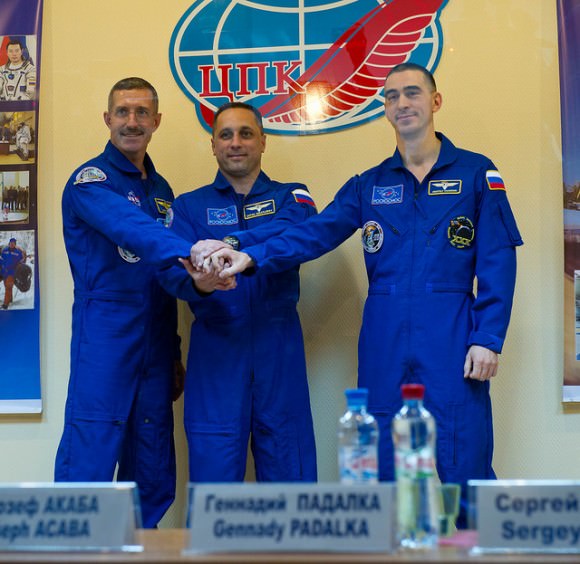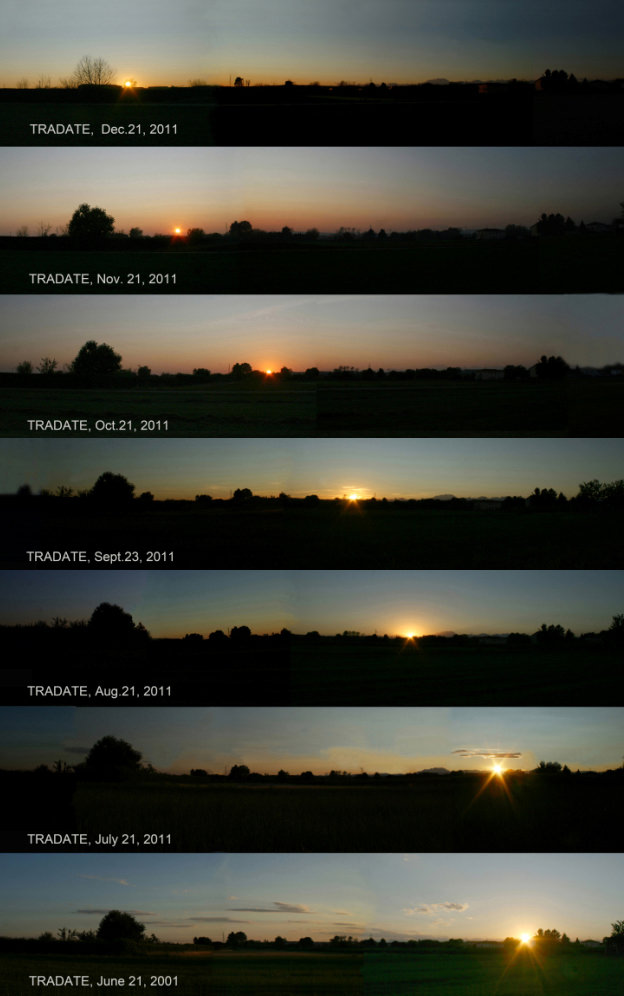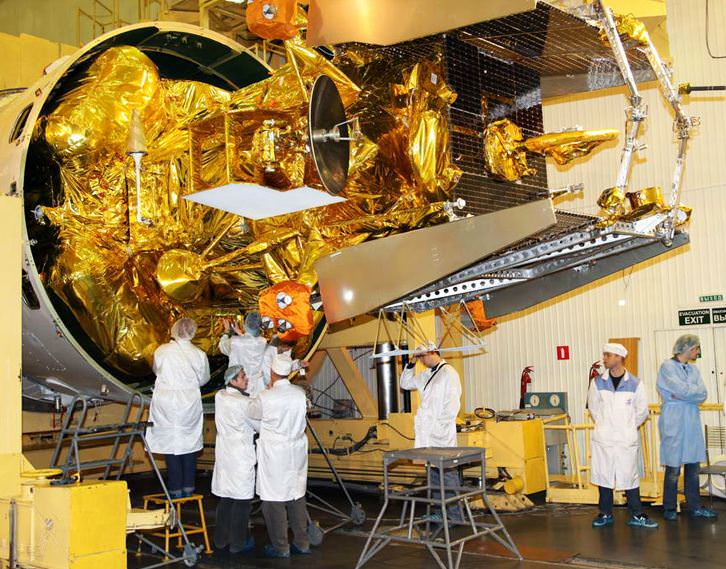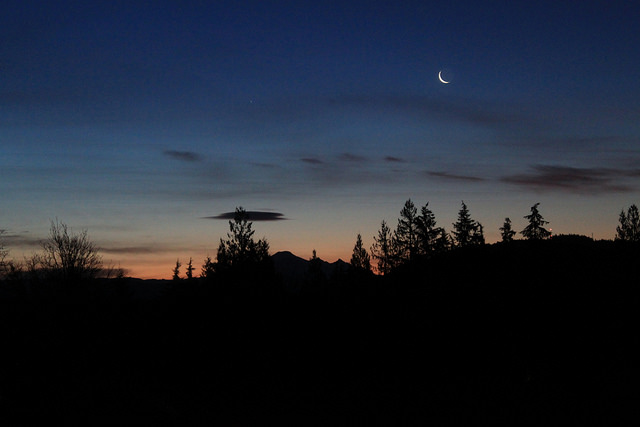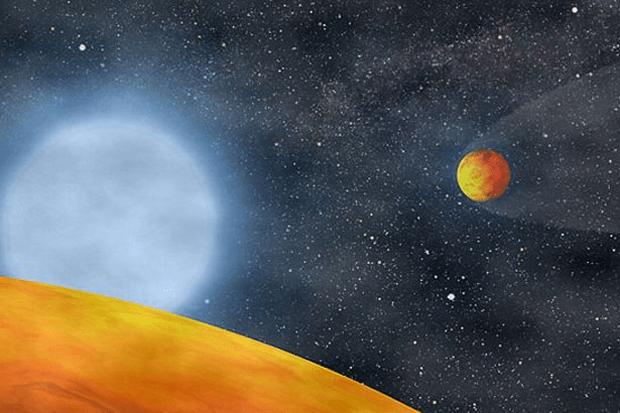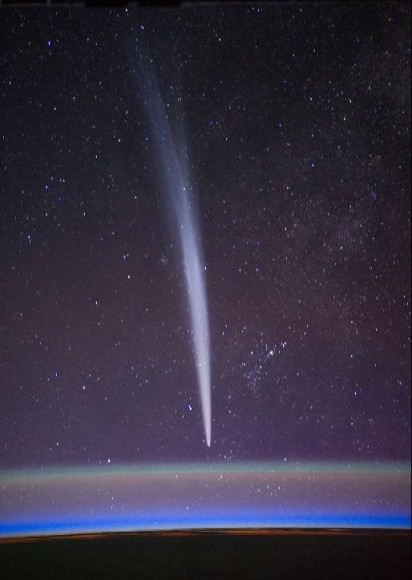This is one of the best timelapse videos of the year, showing ESO’s Very Large Telescope in action and the gorgeous skies above the observatory on Cerro Paranal in the Atacama Desert of northern Chile. The footage was taken on location by Stephane Guisard and Jose Francisco Salgado of ESO.
Happy New Year from the Crew of the International Space Station
Proving up and down doesn’t really matter in space, each of the six crew members on board the ISS sends their New Years greetings to the people of planet Earth.
What if the Earth had Two Moons?
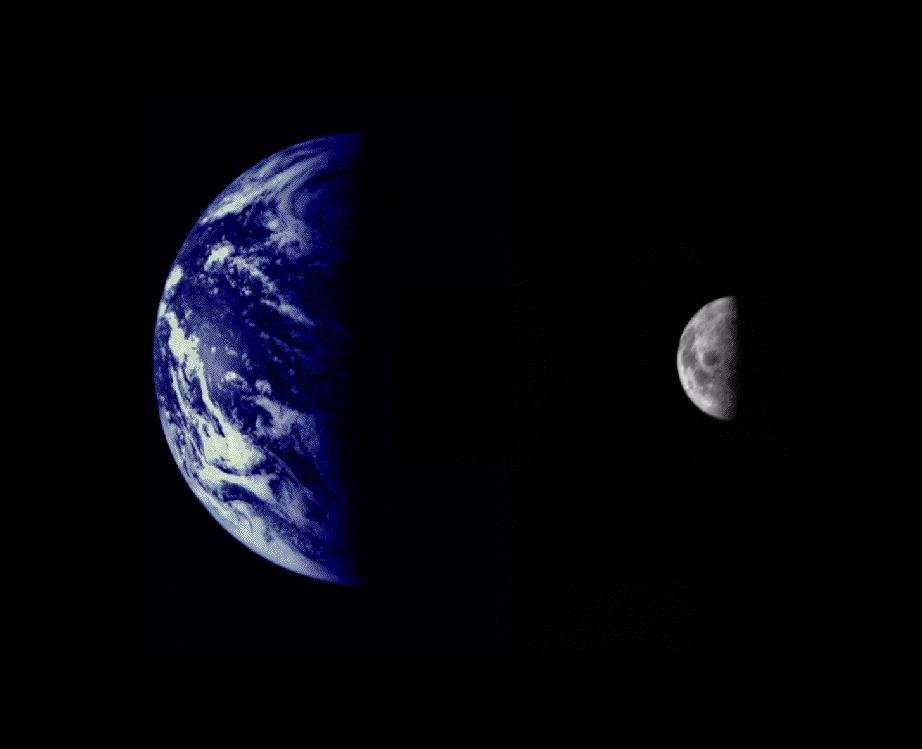
The idea of an Earth with two moons has been a science fiction staple for decades. More recently, real possibilities of an Earth with two moons have popped up. The properties of the Moon’s far side has many scientists thinking that another moon used to orbit the Earth before smashing into the Moon and becoming part of its mass. Since 2006, astronomers have been tracking smaller secondary moons that our own Earth-Moon system captures; these metre-wide moons stay for a few months then leave.
But what if the Earth actually had a second permanent moon today? How different would life be? Astronomer and physicist Neil F. Comins delves into this thought experiment, and suggests some very interesting consequences.
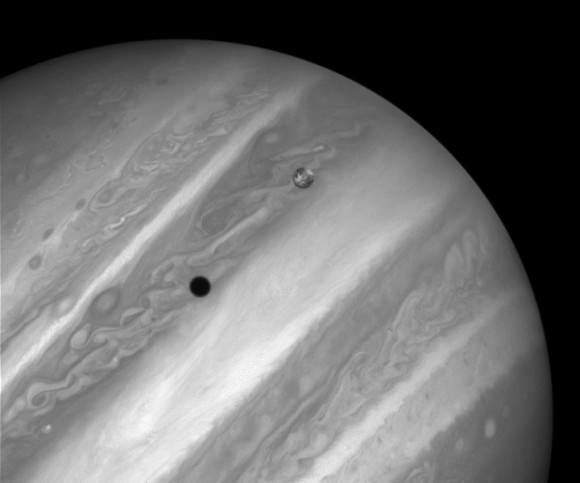
Our Earth-Moon system is unique in the solar system. The Moon is 1/81 the mass of Earth while most moons are only about 3/10,000 the mass of their planet. The size of the Moon is a major contributing factor to complex life on Earth. It is responsible for the high tides that stirred up the primordial soup of the early Earth, it’s the reason our day is 24 hours long, it gives light for the variety of life forms that live and hunt during the night, and it keeps our planet’s axis tilted at the same angle to give us a constant cycle of seasons.
A second moon would change that.
For his two-mooned Earth thought experiment, Comins proposes that our Earth-Moon system formed as it did — he needs the same early conditions that allowed life to form — before capturing a third body. This moon, which I will call Luna, sits halfway between the Earth and the Moon.
Luna’s arrival would wreak havoc on Earth. Its gravity would tug on the planet causing absolutely massive tsunamis, earthquakes, and increased volcanic activity. The ash and chemicals raining down would cause a mass extinction on Earth.
But after a few weeks, things would start to settle.
Luna would adjust to its new position between the Earth and the Moon. The pull from both bodies would cause land tides and volcanic activity on the new moon; it would develop activity akin to Jupiter’s volcanic moon Io. The constant volcanic activity would make Luna smooth and uniform, as well as a beautiful fixture in the night sky.
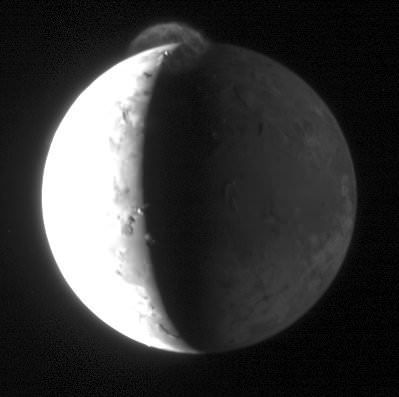
The Earth would also adjust to its two moons, giving life a chance to arise. But life on a two-mooned Earth would be different.
The combined light from the Moon and Luna would make for much brighter nights, and their different orbital periods will mean the Earth would have fewer fully dark nights. This will lead to different kinds of nocturnal beings; nighttime hunters would have an easier time seeing their prey, but the prey would develop better camouflage mechanisms. The need to survive could lead to more cunning and intelligent breeds of nocturnal animals.
Humans would have to adapt to the challenges of this two-mooned Earth. The higher tides created by Luna would make shoreline living almost impossible — the difference between high and low tides would be measured in thousands of feet. Proximity to the water is a necessity for sewage draining and transport of goods, but with higher tides and stronger erosion, humans would have to develop different ways of using the oceans for transfer and travel. The habitable area of Earth, then, would be much smaller.
The measurement of time would also be different. Our months would be irrelevant. Instead, a system of full and partials months would be necessary to account for the movement of two moons.
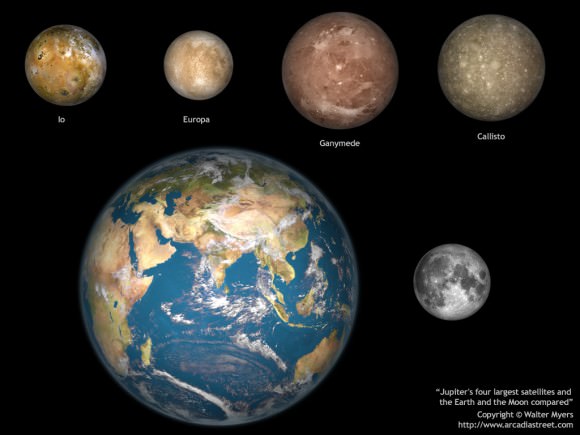
Eventually, the Moon and Luna would collide; like the Moon is now, both moons would be receding from Earth. Their eventual collision would send debris raining through Earth’s atmosphere and lead to another mass extinction. The end result would be one moon orbiting the Earth, and life another era of life would be primed to start.
Source: Neil Comins’ What if the Earth had Two Moons? And Nine Other Thought Provoking Speculations on the Solar System.
An Enlightening Mosaic: Sunsets in 2011
[/caption]
You’ve likely heard the phrase “axial tilt is the reason for the seasons” and here’s a great depiction of that axial axiom. A group of Italian amateur astronomers, the Gruppo Astronomico Tradatese (GAT), have been trying for a couple of years to take images of the Sun setting from the same location on the 21st of the month for several months in a row to show the link between the changing seasons and the movement of the Sun in our sky. The group specializes in outreach to schools and had a goal creating a mosaic of sunsets in 2009, the International Year of Astronomy. However, due to cloudy skies, they weren’t able to successfully obtain the sunset images until the second half of 2011.
“The availability of clear sky for seven dates around the 20-22 of each month starting from June was a crucial necessity,” Cesare Guaita, GAT President wrote to Universe Today. “Starting from 2009, we had to wait up to the second half of year 2011 for the right situation.”
These images of the Italian horizon at approximately 45°42’44” latitude and 8°55’52” longitude shows an Alpine mountain (Monte Rosa, 4634 m high) and trees changing in appearance with the changes of the season.
“As you can see, the sunset is located far away on the right of Rosa Mount at the summer solstice and far away on the left of the Rosa Mount at the winter solstice,” Guaita noted.
Each single picture is a mosaic of 2-3 frames, with the last picture (shown on top) taken on Dec 21, 2011 at 16:30 local time.
This would be a great project for any astronomy group or class. Congratulazioni to the members of the GAT, and we thank them for sharing their mosaic with Universe Today!
Phobos-Grunt Predicted to Fall in Afghanistan on January 14
[/caption]
According to a news report in RiaNovosti, Russia’s Phobos-Grunt spacecraft will fall January 14th, “somewhere between 30.7 degrees north and 62.3 degrees east,” placing debris near the city of Mirabad, in southwestern Afghanistan. RiaNovosti said this prediction is according to the United States Strategic Command who calculated the craft will reenter Earth’s atmosphere at 2:22 am.
Editor’s Update: In a call to USSTRATCOM to verify this information, a spokesperson said, “We are not making any statement at USSTRACOM at this time because we are not the lead for this event and cannot make an official statement for any predictions or what is releasable at this time.”
“Please note that the U.S. Strategic Command prediction had a large uncertainty associated with it, i.e., 11 days,” Nicholas L. Johnson, NASA’s Chief Scientist for Orbital Debris told Universe Today in an email. “No one is yet able to predict with confidence the day the Phobos-Grunt will reenter.”
If the probe is predicted to fall on land, this raises the possibility of recovering the Planetary Society’s Living Interplanetary Flight Experiment (LIFE), designed to investigate how life forms could spread between neighboring planets.
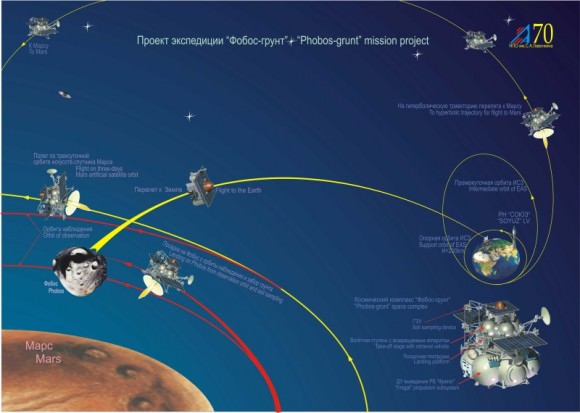
Carrying about 50 kilograms of scientific equipment, the unpiloted Phobos-Grunt probe was launched November 9th on a mission to the larger of Mars two small moons. Although the Zenit 2 rocket that launched the craft functioned flawlessly, sending Grunt into a low Earth orbit, the upper stage booster, known as Fregat, failed to boost the orbit and send it on a trajectory toward Mars. Thought to have reverted to safe mode, Phobos-Grunt has been flying straight and periodically adjusting her orbit using small thruster engines. While this maneuvering has extended the amount of time that the probe could remain in space before reentering Earth’s atmosphere, ground controllers have been struggling to establish a communication link.
For a while, space commentators considered the possibility that Grunt might be sent on an alternate mission to Earth’s Moon or an asteroid, if control could be restored after the window for a launch to Mars and Phobos was lost. During the past few weeks, the European Space Agency (ESA) started and ended efforts to communicate with the spacecraft on several occasions, but succeeded only twice. Various scenarios were imagined in which aspects of the probe’s mission could be salvaged, despite the serious malfunction that prevented the craft from leaving Earth orbit. But at this point, the only direction for the spacecraft to go is down.
In addition to equipment for making celestial and geophysical measurements and for conduct mineralogical and chemical analysis of the Phobosian regolith (crushed rock and dust), Grunt carries Yinhou-1, a Chinese probe that was to orbit Mars for two years. After releasing Yinhou-1 into Mars orbit and landing on Phobos, Grunt would have launched a return capsule, carrying a 200 gram sample of regolith back to Earth. Also traveling within the return capsule is the Planetary Society’s Living Interplanetary Flight Experiment (LIFE).
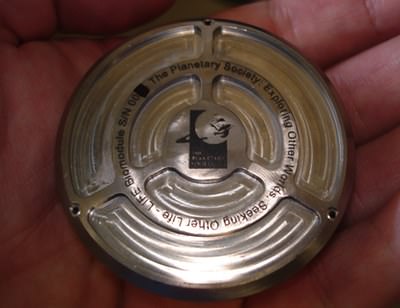
Specifically, LIFE is designed to study the effects of the interplanetary environment on various organisms during a long duration flight in space beyond the Van Allen Radiation Belts, which protect organisms in low Earth orbit from some of the most powerful components of space radiation. Although the spacecraft has not traveled outside of the belts, the organisms contained within the LIFE biomodule will have been in space for more than two months when the probe reenters the atmosphere.
The many tons of toxic fuel are expected to explode high in the atmosphere. However, since the return capsule is designed to survive the heat of reentry and make a survivable trajectory to the ground, it is quite possible that it will reach Afghanistan in one piece. Because the LIFE biomodule is designed to withstand an impact force of 4,000 Gs, it is possible that the experiment can be recovered and the biological samples studied.
To be sure, the possibility of recovering an unharmed returned capsule and LIFE depends on the willingness of the inhabitants around the landing site to allow the Russian Space Agency to pick it up. Given the proximity of the predicted landing area to a war zone and the fact that the Taliban are not known for being enthusiastic about space exploration and astrobiology, it is also possible that a landing on land could turn out no better than a landing over the deepest part of the ocean.
Source: RiaNovosti
Astrophotos: Christmas Crescent Moon from Around the World
[/caption]
A beautiful crescent Moon graced the morning and evening skies over the past holiday weekend, and skywatchers around the world were out with with their cameras! Above, Suraky from British Columbia, Canada took this lovely image of the waning sliver of the Moon from his bedroom window. “The Moon was lit by Earthshine on the dark side, at 7am, with Baker poking out between the trees,” he commented on the image.
See more from other astrophotographers below.
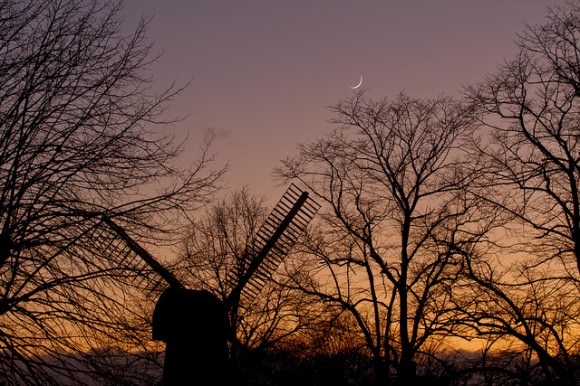
Owen Llewellyn from the UK shared this beautiful shot, taken on Dec. 26, 2011.
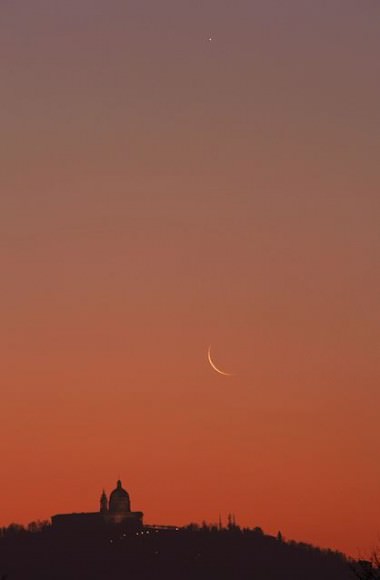
Stefano De Rosa took this image on Dec. 23, 2011 showing the crescent Moon hovering over the Bascilica of Superga in Turin, Italy.
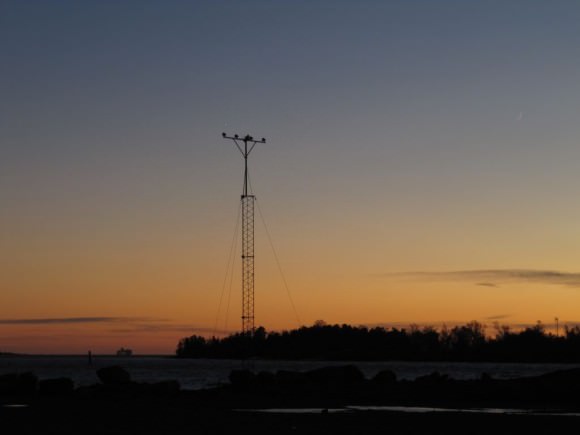
Otto J. Mäkelä from Finland shared this image via Twitter.
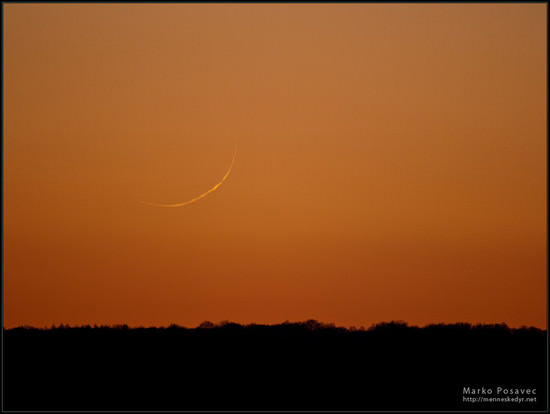
Marko Posavec from Croatia also sent this one via Twitter of a very thin lunar crescent.
Want to get your astrophoto featured on Universe Today? Join our Flickr group, post in our Forum or send us your images by email (this means you’re giving us permission to post them). Please explain what’s in the picture, when you took it, the equipment you used, etc.
Two More Earth-Sized Planets Discovered by Kepler, Orbiting Former Red Giant Star
[/caption]
Amid all of the news last week regarding the discovery by Kepler of two Earth-sized planets orbiting another star, there was another similar find which hadn’t received as much attention. There were two more Earth-sized planets also just discovered by Kepler orbiting a different star. In this case, however, the star is an old and dying one, and has passed its red giant phase where it expands enormously, destroying (or at least barbecuing) any nearby planets in the process before becoming just an exposed core of its former self. The paper was just published in the journal Nature.
The two planets, KOI 55.01 and KOI 55.02, orbit the star KOI 55, a subdwarf B star, which is the leftover core of a red giant star. Both planets have very tight orbits close to the star, so they were probably engulfed during the red giant phase but managed to survive (albeit “deep-fried”). They are estimated to have radii of 0.76 and 0.87 that of Earth, the smallest known exoplanets found so far orbiting an active star.
According to lead author Stephane Charpinet, “Having migrated so close, they probably plunged deep into the star’s envelope during the red giant phase, but survived.”
“As the star puffs up and engulfs the planet, the planet has to plow through the star’s hot atmosphere and that causes friction, sending it spiraling toward the star,” added Elizabeth ‘Betsy’ Green, an associate astronomer at the University of Arizona’s Steward Observatory. “As it’s doing that, it helps strip atmosphere off the star. At the same time, the friction with the star’s envelope also strips the gaseous and liquid layers off the planet, leaving behind only some part of the solid core, scorched but still there.”
The discovery was also unexpected; the star had already been the subject of study using the telescopes at Kitt Peak National Observatory, part of a project to examine pulsating stars. For more accurate measurements however, the team used data from the orbiting Kepler space telescope which is free of interfering atmospheric effects. According to Green, “I had already obtained excellent high-signal to noise spectra of the hot subdwarf B star KOI 55 with our telescopes on Kitt Peak, before Kepler was even launched. Once Kepler was in orbit and began finding all these pulsational modes, my co-authors at the University of Toulouse and the University of Montreal were able to analyze this star immediately using their state-of-the art computer models.”
Two tiny modulations in the pulsations of the star were found, which further analysis indicated could only come from planets passing in front of the star (from our viewpoint) every 5.76 and 8.23 hours.
Our own Sun awaits a similar fate billions of years from now and is expected to swallow Mercury, Venus, Earth and Mars during its expansion phase. “When our sun swells up to become a red giant, it will engulf the Earth,” said Green. “If a tiny planet like the Earth spends 1 billion years in an environment like that, it will just evaporate. Only planets with masses very much larger than the Earth, like Jupiter or Saturn, could possibly survive.” The discovery should help scientists to better understand the destiny of planetary systems including our own.
This finding is important in that it not only confirms that Earth-size planets are out there, and are probably common, but that they and other planets (of a wide variety so far) are being found orbiting different types of stars, from newly born ones, to middle-age ones and even dying stars (or dead in the case of pulsars). They are a natural product of star formation which of course has implications in the search for life elsewhere.
The abstract of the paper is here, but downloading the full article requires a single-article payment of $32.00 US or a subscription to Nature.
Why Do We Live in Three Dimensions?
[/caption]
Day to day life has made us all comfortable with 3 dimensions; we constantly interact with objects that have height, width, and depth. But why our universe has three spatial dimensions has been a problem for physicists, especially since the 3-dimensional universe isn’t easily explained within superstring theory or Big Bang cosmology. Recently, three researchers have come up with an explanation.
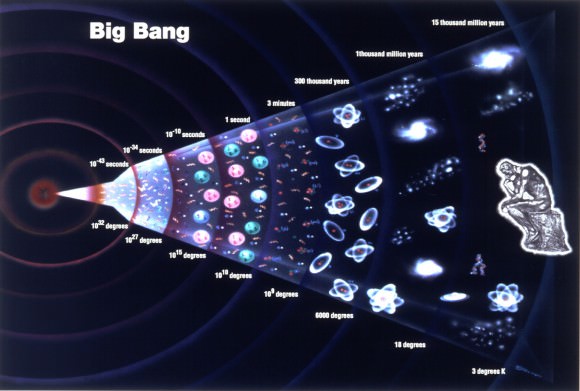
Most astronomers subscribe to Big Bang cosmology, the model that proposes that the universe was born from the explosion of an infinitely tiny point. The theory is supported by observations of the cosmic microwave background and the abundance of certain naturally occurring elements. But Big Bang cosmology is at odds with Einstein’s theory of general relativity – general relativity doesn’t allow for any situation in which the whole universe is one tiny point, which means this theory alone can’t explain the origin of the universe.
The incompatibility between general relativity and Big Bang cosmology has stumped cosmologists. But almost 40 years ago, superstring theory arose as a possible unifying theory of everything.
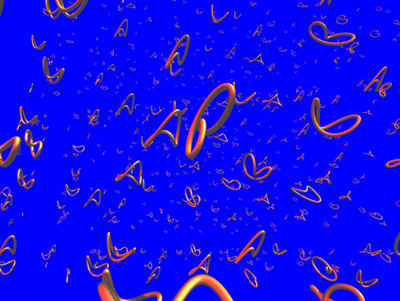
Superstring theory suggests that the four fundamental interactions among elementary particles – electromagnetic force, weak interaction, strong interaction, and gravity – are represented as various oscillation modes of very tiny strings. Because gravity is one of the fundamental forces, superstring theory includes an explanation of general relativity. The problem is, superstring theory predicts that there are 10 dimensions – 9 spatial and one temporal. How does this work with our 3 dimensional universe?
Superstring theory has remained little more than a theory for years. Investigations have been restricted to discussing models and scenarios since performing the actual calculations have been incredibly difficult. As such, superstring theory’s validity and usefulness have remained unclear.
But a group of three researchers, associate professor at KEK Jun Nishimura, associate professor at Shizuoka University Asato Tsuchiya, and project researcher at Osaka University Sang-Woo Kim, has succeeded in generating a model of the universe’s birth based on superstring theory.
Using a supercomputer, they found that at the moment of the Big Bang, the universe had 10 dimensions – 9 spatial and 1 temporal – but only 3 of these spatial dimensions expanded.

The team developed a method for calculating matrices that represent the interactions of strings. They used these matrices to calculate how 9 dimensional space changes over time. As they moved further back in time, they found that space is extended in 9 directions, but at one point only 3 directions start to expand rapidly.
In short, the 3 dimensional space that we live in can result from the 9 original spatial dimensions string theory predicts.
This result is only part of the solution to the space-time dimensionality puzzle, but it strongly supports the validity of superstring theory. It’s possible, though, that this new method of analyzing superstring theory with supercomputers will lead to its application towards solving other cosmological questions.
Soyuz Rocket’s Comet-like Re-Entry Captured on Video
Part of the Soyuz rocket that brought the latest trio of crew members to the International Space Station fell back to Earth on Dec. 24, and its fiery re-entry was captured by several skywatchers in Europe. This footage taken from Germany is the best view of it, and there’s another good view below. Some people mistakenly thought it was a comet; and since this lightshow occurred on Christmas Eve, there were a few who suggested it might be Santa flying across the fly. That would have been bad news, however, to see debris breaking off the sleigh…
Additionally, there are reports that debris from the failed Soyuz rocket that was supposed to send a communications satellite into orbit fell and hit a house in Siberia. An animation of that event is also posted below. Continue reading “Soyuz Rocket’s Comet-like Re-Entry Captured on Video”
Absolutely Spectacular Photos of Comet Lovejoy from the Space Station
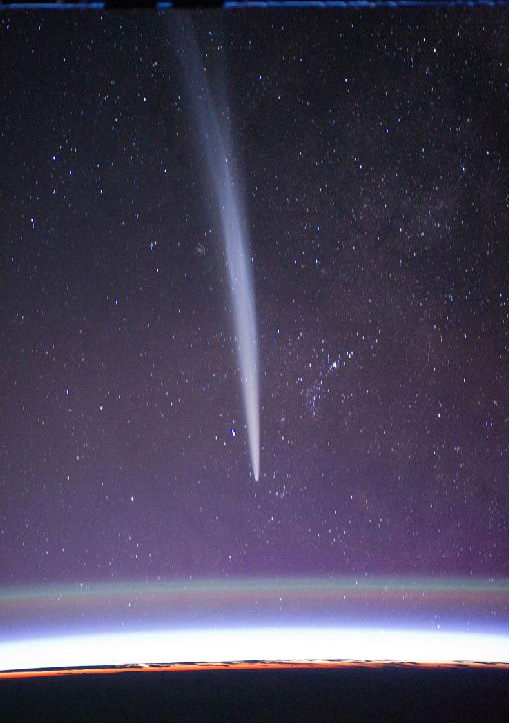
[/caption]
Check out this absolutely stunning collection of new Comet Lovejoy photos taken by space station commander Dan Burbank just before the Christmas holidays on Dec. 22, 2011 – what an amazing holiday treat, the Chrtistmas Comet!
Burbank shot these exquisitely detailed nighttime images showing the comet near the Earth’s horizon and framed with a gorgeously rich star field, all while floating aboard the International Space Station (ISS) some 400 kilometers (250 miles) above all of us – and absent any atmospheric interferences and distortions !
Burbank is a NASA astronaut and commander of ISS Expedition 30.
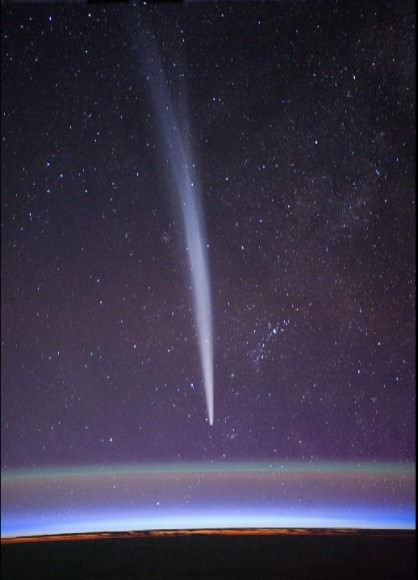
The comet has put on a spectacular show for observers in the Earth’s southern hemisphere despite prognostications of a fiery death as it careened through the suns corona during perihelion on Dec. 16 at a distance of 140,000 kilometers (87,000 mi).
Astronaut Burbank launched to the ISS on Nov. 13 along with Russian cosmonauts Anton Shkaplerov and Anatoly Ivanishin aboard the Soyuz TMA-22 capsule from the Baikonur Cosmosdrome. The trio docked on Nov. 16 for a more than 4 month stay.
Comet Lovejoy was only discovered on 27 November 2011, by Australian amateur astronomer Terry Lovejoy and classified as a Kreutz sungrazer. It has put on an unexpected and magnificent Christmas Comet holiday show.
Burbank first caught an accidental glimpse of Comet Lovejoy on Dec. 21 and snapped an initial set of beautiful comet photos from the Cupola observation dome aboard the ISS.
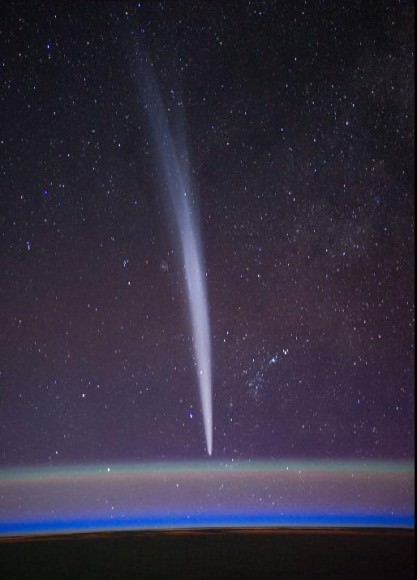
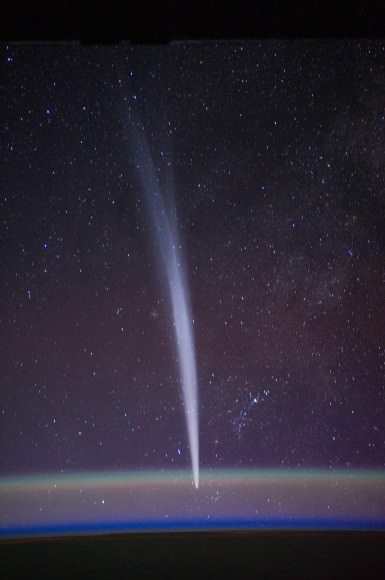
And – there’s still time to create an Asteroid Vesta themed winter holiday greeting card, here
